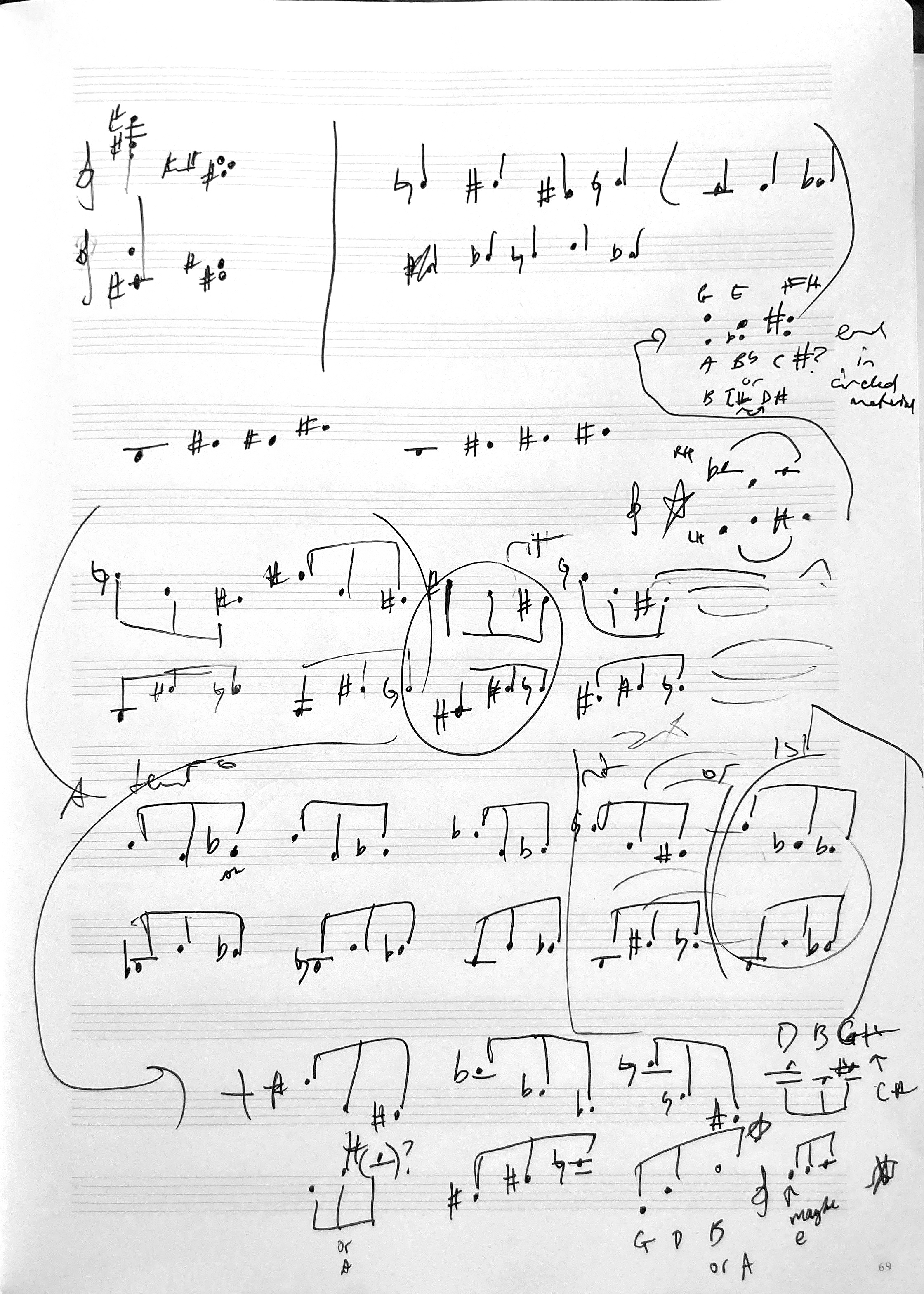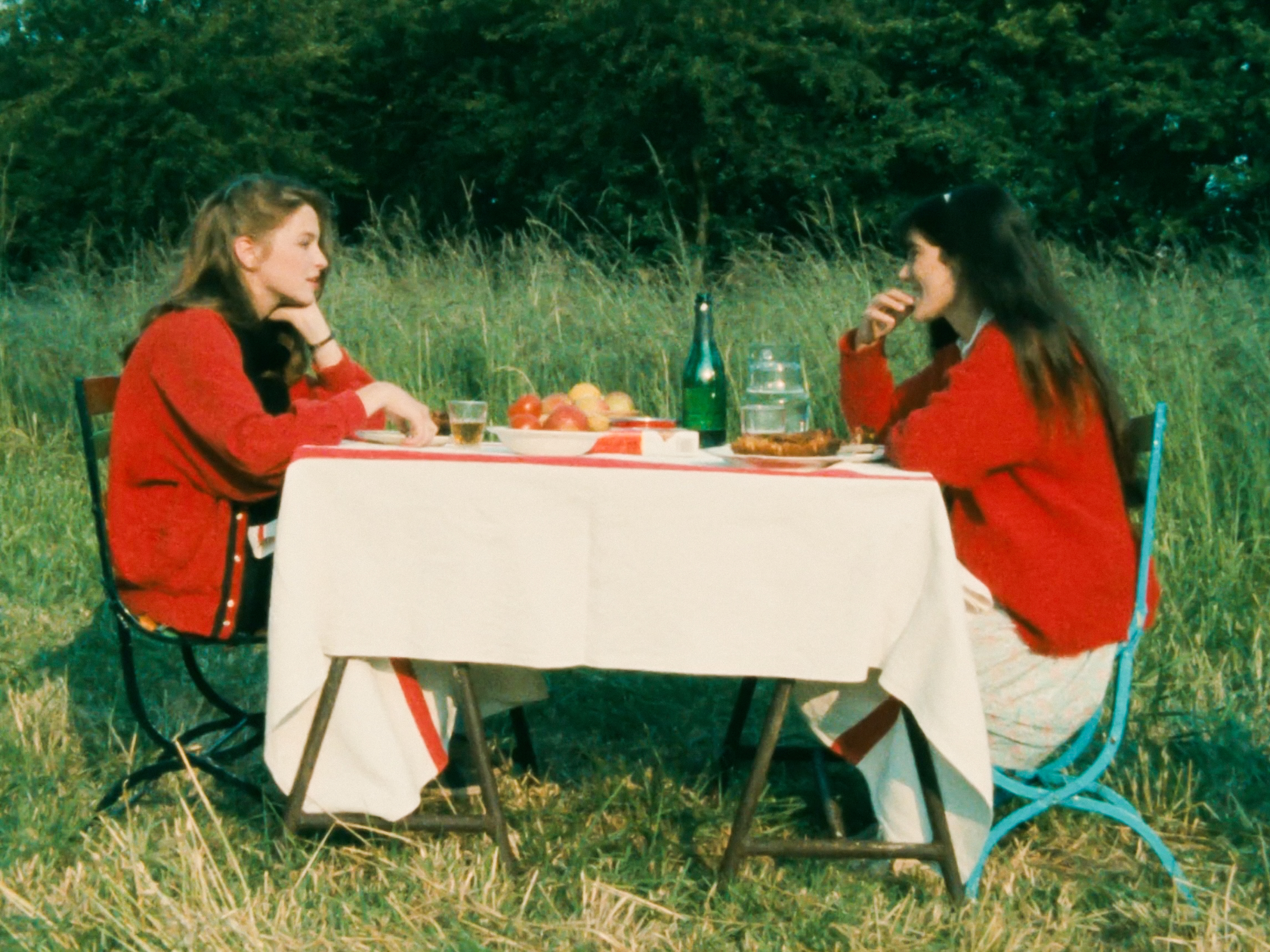postcards 1 & 2 - supporter page
welcome to the online home of postcards 1 & 2 - you will find a demo recording of each postcard and a typeset pdf of the score if you wish to play the pieces for yourself (from a version of the music that is a little easier to read!).
I hope you are intrigued to take a look behind the scenes and learn more about the music!
I’m excited to share these first two postcard pieces with you and i’m even more excited to see how the postcard form will evolve throughout the project…there are lots of ideas dancing around my mind…
you are welcome to download the demo recordings below. at the conclusion of the project, i’ll be recording all of the postcard pieces properly and beautifully in the studio to accompany the book of sheet music I plan to release.
the next postcard drop will be posted out on May 1. in the meantime, i’d love to know any impressions/thoughts/ideas you have about this project - feel free to also pass it onto to anyone who might be interested to join in…it’s not too late! people can sign-up at anytime and regardless will receive the full postcard experience! 😊
about antique minute
antique minute began as an improvisation using some chords to be found in Ravel’s Menuet Antique (1895). I know that Ravel liked mini objects/knick knacks (much like me!) so I thought antique minute should be accompanied by a playful depiction of old and odd objects and details that can be found at my desk.
the original work by Ravel and namesake of my postcard. Ravel orchestrated this piece later on down the track. perhaps some of my postcards might turn into something more?
one day I will compose a piece dreaming about Ravel’s mechanical bird that sat atop his piano… along with many other curios and trinkets.
I was introduced to the piano music of Ravel by my piano teacher Nerida Ottley (an amazing human who taught me from when I was an energetic six year old till I was studying at the Con!).
I was intrigued then by his music. I am still intrigued now. I hadn’t heard Minuet Antique until very recently. having already composed blue hour (see below), I liked the idea that an antique minute would pair nicely for the first postcard release.
when carefully listening to some Ravel, every so often a moment in the music warrants a “woah!” in my mind. my composer brain then feels the urge of wanting to understand the reason behind the “woah!”. in the case of my antique minute, I zoomed in on a chord that was earxciting, improvised, and played around a little to get to the point of forming a minute of music.
some objects, postcards and details that surround my desk… that you can spot in my illustrations!
lots of my first sketches look like this…messy…and nonsensical to most!
about blue hour
blue hour is a little window looking out to the sky during one of my favourite times of the day. blue hour is a period of twilight in the morning or evening when the sunlight takes on a very particular palette of blue tones.
I first learnt of blue hour from a clip I had seen from Four Adventures of Reinette and Mirabelle (1987). here is some dialogue from the scene:
Reinette: Hear of the blue hour?
Mirabelle: Blue hour?
Reinette: It’s not an hour…a minute, really.
Just before dawn, there’s a minute of silence.
The day birds aren’t up yet,
and the night birds are already asleep.
Then…
There’s real silence.
…
Reinette: It’s the only time you feel nature holding its breath.
more than often, reading or hearing a pair of words that I like the sound of instigates an idea for a piece. though this postcard mini has taken this title for now…I know that “blue hour” will one day form the basis of a longer work.
if I wake up early enough and I smoosh my face or phone close enough to the window I get a good glimpse of blue hour (though technically speaking this photo was taken just after…hence the golden yellow creeping in…).
another mess of a sketch…
I’ve certainly learnt a lot releasing this first batch of postcards! for the postcard to get to your letterbox, the process looks something like this:
(1) play the piano, improvise a little, starting with a seed of an idea. (2) sketch out/compose the piece. (3) visit the printers to assess, chose and most importantly, feel the paper. (4) create a watercolour accompaniment! (5) copy out and notate the music. (6) create a design digitally that combines the music and watercolour accompaniment. (7) prepare the file for print and send to the lovely folk at KopyStop in Ultimo. (8) receive an email the next morning that my prints are ready for collection! (9) go to the printers, only to learn that every file I sent was in fact prepared incorrectly (but they were happy I tried!) though luckily it didn’t impact my design! (10) learn about what to do for next time. (11) sign/number the prints. (12) write the letters. (13) stuff the envelopes. (14) go to the post office and purchase stamps. (15) post!
I have thoroughly enjoyed this process! It has been a joy for me to have the time and space to create something that I’m sharing directly with people and to create something that combines my love for the piano, handwriting scores, and painting…and all the other activities in between!
though I have been crafting and simmering this project for a little while now, unexpected ideas and possibilities continue to arise throughout the process - which is to be expected!
in some ways this project’s roots go back to my early years in learning the piano. after completing a piano exam, the next day I would sit at the piano and play through almost every piece I’d every learnt up until that moment - flicking through pages and pages of music. I loved traversing through all of these little worlds of music and revisiting and exploring the ecosystem of repertoire that was at my fingertips. as a pianist, I have always been fascinated and grateful for the plethora of “collections of pieces” that composers have written for the instrument.
looking through the music on my grandmother’s treasured shelf of piano music.
carefully opening up a book to choose a new piece to learn.
playing through a piece merely one page in length and being totally engrossed within the form.
the feeling is similar to when, on my birthday last year, I (unexpectedly) received a miniature box of handmade chocolates from our AirBnb host Verena in Vienna:
in February, whilst in Melbourne, I visited the Australian Centre of the Moving Image and was mesmerised by the feeling of holding moving images in the palm of my hand:
a favourite piano mini of mine from Schumann’s Kinderszenen - Scenes from Childhood’… a collection of 13 pieces - most of which are less than a page in length. Schumann supposedly said the pieces were inspired by his wife (Clara Schumann) saying he was “child-like”.
I was too engrossed within the Memory Garden to even think to take a photo. so the photo is courtesy of ACMI. please visit the ACMI - cannot recommend it enough! this installation featured footage from various “home movie” collections that one could experience from the cinema of their hand!
the miniature is curious, extraordinary, and novel - it’s like receiving an unexpected, carefully crafted gift or carefully holding a fragile memory that doesn’t belong to you in the palm of your hand.
a friend once said that miniature things everywhere stressed him out (this is before he had ever visited my place…uh oh…). another friend once said in an email to me “You can become as many different kinds of artist as you like, but, going by the videos, I’ve thought of you as a miniaturist”. and so for now, I will continue to be mesmerised and intrigued by miniature forms in music. piano postcards is a vehicle for me to explore many intertwining threads within my practice and share this with you on the back of a lil postcard!
here’s a quote from a book I read recently (at the recommendation of dear friend and fellow art/sound/music-maker Jane Aubourg… who is currently working through an incredible project that you should check out!)
The discovery of useful forms is precious. Once found, they should never be abandoned for trivial reasons. It’s easy to imagine today’s art instructor cautioning Chopin that the Mazurka thing is getting a little repetitive, that the work is not progressing. Well, true, it may not have been progressing — but that’s not the issue. Writing Mazurkas may have been useful only to Chopin — as a vehicle for getting back into the work, and as a place to begin making the next piece. For most artists, making good art depends upon making lots of art, and any device that carries the first brushstroke to the next blank canvas has tangible, practical value.
― David Bayles, Art & Fear: Observations on the Perils (and Rewards) of Artmaking
thanks for reading this far and for supporting me in making lots of art!
~ elizabeth 🌻👂🎶





















